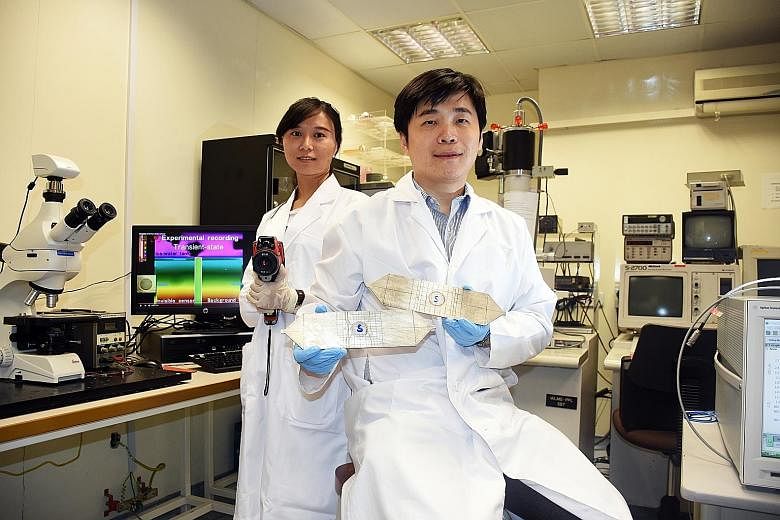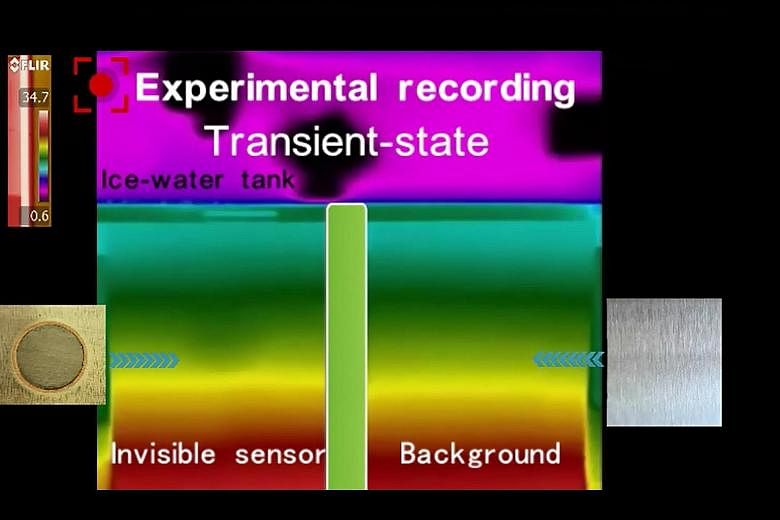Local researchers have developed an invisibility cloak that can hide anything that emits heat or electricity, such as a soldier doing reconnaissance in the dead of night, or an electricity or power grid.
The National University of Singapore (NUS) team which created the camouflage shell claims it is a world first, with applications in defence, for instance.
Said Assistant Professor Qiu Cheng-Wei of the NUS Faculty of Engineering: "This introduces a defence advantage, where the enemy cannot see the soldier, but the soldier can detect the enemy."
In military tanks on stealth missions, for instance, a camouflage shell would hide its heat and electrical signature, making it undetectable to any devices watching out for it. At the same time, the tank's sensors would remain sensitive to other people and machines nearby.
This is because the shell acts like a one-way mirror, allowing such information to enter the vehicle. A problem faced by such technology in the past was that the cloak acted more like a two-way barrier, he explained. Previous technology was also only able to work in specific single fields.
Professor Hong Minghui from the Department of Electrical and Computer Engineering at the NUS Faculty of Engineering, who was not involved in the effort, stressed the significance of this research.
"Quite a lot of research is being done on this subject, but it is being tested in individual fields rather than multi-fields. This is the first research that combines the two fields - thermal and electrical - together, enabling a sensor to work in two fields simultaneously."
Professor Nicholas Xuanlai Fang of the Department of Mechanical Engineering at Massachusetts Institute of Technology in the United States, who was also not part of the research, agreed that it is unique.
"This (research) is very intriguing because it is often difficult to find designs that can satisfy the requirement of both thermal and electrical domains. I think our community will be inspired to explore new concepts of embedded sensors for secure communication and environmental monitoring, such as smart buildings."
The team developed the technology in 14 months, using naturally available materials such as pure copper and stainless steel.
How does it manage to achieve this one-way mirror effect?
It is difficult to cloak sensors in a multi-physical field, where there are differences in heat and voltage, for example. This is because the sensors could distort the field readings, while the high temperature or strong voltage environment would easily damage the sensors, explained Prof Qiu.
But the new camouflage shell can protect sensors from the harsh environment by drastically reducing the flow of heat and electric current to the sensor simultaneously.
This was achieved by carefully calculating the suitable ratio of materials to be used and measuring the perfect thickness for the shell. The thinner the shell is, the more "invisible" the sensor is to the external environment.
At the same time, the sensor is able to continue probing the temperature and voltage of the environment because the coating shell eliminates surrounding field distortions. Examples of thermal fields include engines in operation or even a human body, which radiates heat, while electrical fields could refer to electricity plants or power grids.
For now, plans for the use of the material lean more towards coating objects, said Prof Qiu, and the team is in talks with some power companies on translating this research.
In the long term, the team hopes to expand the research to humans, with the use of more flexible material that can fit on the human body.


